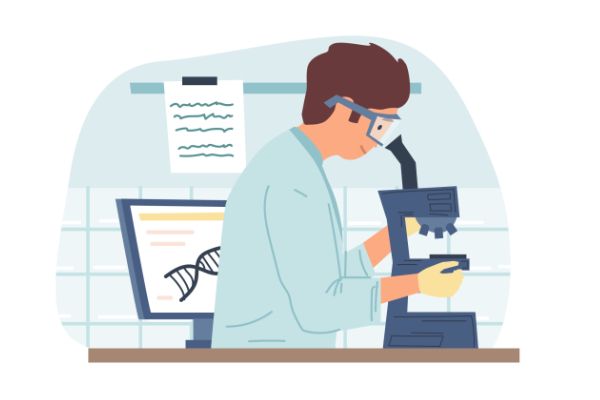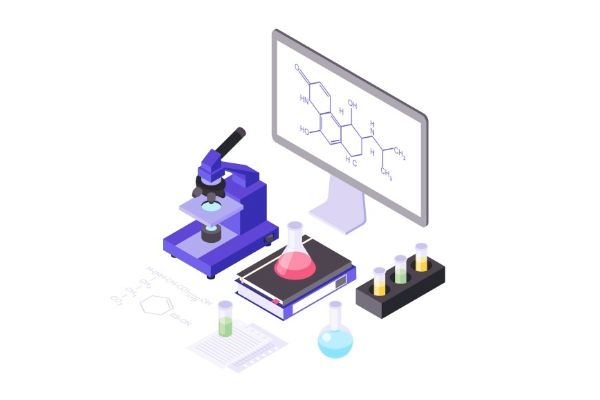From "Angelic Pharmacy" to "Century-Old Store": Unveiling Merck's Road to Revival
What comes to mind when you think of Merck?
Is it the humanitarian spirit of donating hepatitis B vaccines to China? Or perhaps the founder's statement, "We must always remember that medicines are produced for the benefit of humanity..."? Or maybe it's the famous Keytruda that is well-known today?
The history of Merck, also known as MSD, can be traced back 354 years to 1668, making it a legendary presence among multinational pharmaceutical companies.
Over the centuries, Merck has experienced many ups and downs.
Merck and MSD
In 1668, pharmacist Friedrich Jacob Merck established a pharmacy called "At the Sign of the Angel" in Darmstadt, Germany, which he later renamed to "Merck's Angel Pharmacy."
After Merck's passing, the pharmacy was passed down through generations.
In 1827, Heinrich Merck transformed the pharmacy into a pharmaceutical factory and founded the company E. Merck AG, which began industrial production of morphine, codeine, and cocaine.
By the time of Heinrich Merck's death in 1855, the company's products were being used worldwide.
In 1899, Heinrich Merck's grandson, George Merck, ventured overseas to take over the German Merck's branch in New York and established Merck & Co., primarily responsible for product import and distribution. In 1903, Merck's first factory in the United States was completed in New Jersey.
In 1917, during World War I, Merck's assets in the United States were seized by the American government as enemy property. George Merck surrendered 80% of the shares belonging to the German parent company and retained the remaining 20% for himself. The confiscated shares were later publicly auctioned, and George Merck spent a staggering $3 million at the time to repurchase his portion from the US government, signing an agreement to be free from the constraints of the German parent company.
From that point on, German Merck and US Merck severed all legal ties and developed independently. In 1926, George Merck passed away, and his son, George W. Merck, took over the company.
In 1953, Merck in the United States merged with Sharp and Dohme, forming Merck Sharp & Dohme (MSD).
According to the agreement between German Merck and Merck Sharp & Dohme, the name "Merck" can only be used by MSD in North America (United States and Canada), while the name "Merck Sharp & Dohme" is used in all other parts of the world.
Founder of Merck: George W. Merck
In 1933, George W. Merck established a large laboratory that attracted a group of top pharmaceutical scientists from around the world. Just in the 1950s alone, this laboratory had 17 Nobel Prize winners working there.
They developed various groundbreaking medications, including the short-acting anesthetic diethyl ether, streptomycin, cortisone, pentazocine, and hydrochlorothiazide, opening the doors to the treatment of many diseases.
George W. Merck's core business philosophy was, "Medicine is for the people, not for profit. As long as we hold on to this belief, profits will follow." This statement became the core values of Merck and a motto for many entrepreneurs.
During George W. Merck's nearly 30-year tenure, he transformed a small factory with annual sales of $6 million into an integrated company with annual sales exceeding $100 million.
Divestment of Diversified Businesses, Focusing on Pharmaceutical Pipeline
In 1965, Henry Gadsen became the new leader of Merck, and in order to rapidly expand the company's pipeline, Merck embarked on a path of diversification. Its business pipeline included water treatment chemicals, eye drops, and healthcare products.
However, the grand diversification did not contribute much profit to Merck.
In 1976, John Honran took over the company as the new CEO. With a pragmatic approach, John Honran continued Merck's tradition in pharmaceutical research and development, refocusing the company's core business on the pharmaceutical field. Under John Honran's leadership, Merck introduced well-known products such as simvastatin, cefadroxil, sulindac, and diflunisal. During John Honran's tenure, Merck's sales increased from $2.6 billion to $3.5 billion, with an average annual growth rate of 9%.
In 1986, Roy Vagelos succeeded John Honran. Vagelos placed great emphasis on drug development, increasing research and development spending from $570 million in 1987 to $1.23 billion in 1994. With high investments, Merck also achieved substantial returns.
In 1985, Merck launched Vasotec (enalapril), and the following year its sales reached $550 million, making it the first Merck drug to exceed $1 billion in sales in 1988. Additionally, during Vagelos' tenure, Merck also developed blockbuster drugs such as lovastatin, finasteride, and losartan.
Meanwhile, Merck's annual sales rose from $4.1 billion to $10.5 billion, catapulting the company to the top position among global pharmaceutical companies at the time.
Free Donation of Vaccines and Medicines, Demonstrating Humanitarian Spirit
During Vagelos' tenure, Merck actively engaged in humanitarian efforts. In 1981, Merck's recombinant hepatitis B vaccine was approved for market. At that time, approximately 120 million Chinese people were infected with the hepatitis B virus, and domestic hepatitis B vaccine development was only at the stage of plasma-derived vaccine technology. These vaccines not only lacked safety guarantees but could only be produced on a small scale. As a result, the Chinese government wanted to directly purchase Merck's hepatitis B vaccine technology.
Initially, Merck intended to sell the vaccine to China at a price of "100 dollars per person." Calculating based on the annual birth rate of 20 million infants at the time, China would have to spend $2 billion each year. This price far exceeded the Chinese side's expectations, and negotiations reached a deadlock.
Eventually, Vagelos agreed to transfer this technology to China at a bottom price of $7 million, almost giving it away. Furthermore, according to the signed agreement, Merck provided the complete technology, trained Chinese personnel, and promised "not to charge any patent fees or profits, nor to sell the Merck-produced hepatitis B vaccine in China." Later, the expenses incurred by Merck for training Chinese engineers and dispatching personnel to China exceeded $7 million.
Merck's actions at that time protected at least 40 million Chinese children from the harm of the hepatitis B virus, saving the country significant social costs.
During the same period, Vagelos also provided a drug called Ivermectin free of charge to the world for the treatment of "river blindness." This is a tropical parasitic disease prevalent in Africa, transmitted through the bites of black flies. Infected individuals experience itching and severe pain on the skin and eventually suffer permanent blindness. At that time, over 100 million people worldwide were affected by this disease, but most African patients were unable to afford the treatment drugs.
To date, Merck has donated over 2.5 billion doses of Ivermectin to more than 30 countries and regions, helping approximately 250 million river blindness patients. Due to Merck's long-term free distribution of this drug to Africa, river blindness has almost been eradicated.
In 1987, under Vagelos' leadership, Merck shared research findings on HIV (Human Immunodeficiency Virus) treatment with its competitors, making significant contributions to AIDS prevention and treatment. Merck's tremendous humanitarian spirit has made it one of the most respected pharmaceutical companies in the world.
The Era of Frazier: Turning the Tide
In the mid-1990s, the research and development costs for new drugs began to increase, and Merck's blockbuster products faced looming patent cliffs one after another, putting the company in a bottleneck.
Meanwhile, other pharmaceutical giants started adopting a "stronger through mergers" approach, with Pfizer acquiring Pharmacia and Wyeth, Sanofi partnering with Aventis, and AstraZeneca merging with Aventis and Janssen, leaving Merck, still adhering to a "solo" model, trailing behind.
In 2000, Merck's drug sales were surpassed by Pfizer and GlaxoSmithKline, losing the top spot for the first time. By 2009, Merck had fallen to seventh place, but the most devastating blow came in 2004 when Vioxx (Rofecoxib), a blockbuster arthritis pain medication with annual sales of $2.5 billion, was withdrawn from the market due to safety issues, severely damaging the company's reputation. According to a report in the Sunday Times on August 21, 2005, Vioxx was estimated to have caused the deaths of 60,000 people worldwide, and Merck was inundated with lawsuits.
Amid the decline in rankings and the turmoil of litigation, Merck welcomed its new CEO, Kenneth C. Frazier. Frazier, a lawyer by profession, joined Merck as General Counsel in 1992 and was promoted to senior executive and Executive Vice President and General Counsel in 2006. During this time, he successfully resolved almost all of the Vioxx lawsuits for less than $5 billion, far below the analysts' estimated $18 billion. In 2011, Frazier took the helm as CEO of Merck.
Frazier, with his legal background, attached great importance to new drug development. Upon taking office, he advocated for increased investment in research and development costs, aiming to reverse the company's previous decline.
Under Frazier's leadership, Merck launched several blockbuster drugs, including Keytruda (pembrolizumab), Gardasil 9 (nine-valent HPV vaccine), and others. The tremendous success of Keytruda added a significant milestone to Frazier's career.
Furthermore, through a series of acquisitions, Merck obtained heavy-hitters such as Uprifosbuvir for hepatitis C, anticancer drugs OTX015, RGT100, and chronic cough medicine MK-7624.
The development of new products and strategic acquisitions propelled Merck's growth, allowing Frazier to lead the company back to a global top-three position. In 2021, Merck achieved total sales revenue of $48.704 billion, a 16% year-on-year increase, with adjusted profits of $15.282 billion, a 31% year-on-year increase.
Frazier has been regarded as another highly respected leader in Merck's history, alongside the founder, George W. Merck. In 2018, Frazier was named one of the world's greatest leaders by Fortune magazine and one of the 100 most influential people by Time magazine.
Today, Frazier has stepped down as CEO of Merck, with former CFO Robert M. Davis assuming the position. Davis, who joined Merck as CFO in 2014 from Baxter, shares a similar legal background with Frazier. At the beginning of his tenure, Davis stated that he would continue Frazier's innovative strategy, making Merck a leading research-intensive biopharmaceutical company.
In the past, Merck dominated the pharmaceutical industry with its high productivity in research and development, holding the top position. However, relying solely on internal R&D strategies gradually led to Merck being overtaken by competitors adept at mergers and acquisitions, such as Pfizer.
Particularly, as research costs rose and R&D returns declined, Merck found itself in a predicament. Fortunately, Merck adjusted in a timely manner and began to prioritize mergers and acquisitions, which also received significant attention within the company.
Notably, the substantial acquisition of Schering-Plough in 2009 and subsequent acquisitions in 2014 were innovations driven by market recognition, marking the gradual rejuvenation of this once pharmaceutical empire.
Additionally, we can see the radiance of compassion from CEOs such as George W. Merck, Vagelos, and Frazier, which has earned Merck the respect of the world and social recognition. The future of Merck under the leadership of Robert M. Davis is eagerly anticipated.
In conclusion, let us pay tribute to companies like Merck that have made outstanding contributions to the cause of human health.
As a guiding principle, we should always remember that medicines are produced for the benefit of humanity, not solely for profit. By staying true to this belief, profits will naturally follow. As long as we remember this, profits will never disappear; the clearer we remember, the more profits will come. We cannot stand by and claim victory simply by inventing a new drug. We must not stop until we find an effective way to deliver our best achievements to everyone.
——George W. Merck

References
1.http://www.company-histories.com/Merck-Co-Inc-Company-History.html;
2.https://www.fiercepharma.com/marketing/keytruda-nabs-fda-quick-review-for-new-bladder-cancer-use-a-gene-therapy-breathing-down;
3.https://www.fiercepharma.com/special-report/kenneth-frazier-merck;
4.https://www.fiercepharma.com/pharma/ken-frazier-to-retire-as-merck-ceo-after-10-year-run-handing-baton-to-cfo-robert-davis.



